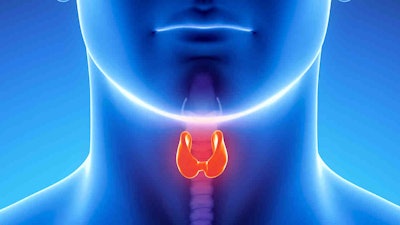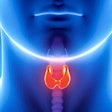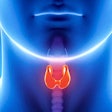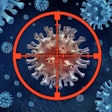
A team led by researchers at Vanderbilt University Medical Center has developed a signature for thyroid cancer aggressiveness that incorporates immune and other microenvironment features through multiomic analyses.
In an article published in Cell Genomics, the researchers explained that thyroid cancer profiling has largely focused on the features involved in malignancy and tumor development. However, in seeking to assess potential factors contributing to thyroid cancer aggressiveness, treatment response, disease recurrence, and patient outcomes, the authors incorporated stromal microenvironment features, tumor gene mutations, gene fusions, and other features not previously studied in depth.
Using a combination of tumor exome sequencing, RNA-seq, spatial transcriptomic profiling, and clinical data, the researchers searched for prognostic biomarkers in 312 formalin-fixed, paraffin-embedded resected thyroid lesions from a cohort of 251 thyroid cancer patients from two tertiary medical centers. The tumors tested included 116 samples from the papillary subtype, 106 follicular tumors, 55 tumors from the transformed subtype, and 35 non-neoplastic thyroid tumors.
The team identified high-risk mutations and developed a 549-gene "molecular aggression and prediction" (MAP) score, a unique molecular signature of aggressive disease to predict thyroid cancer aggressiveness. For example, when the investigators investigated the MAP score with anaplastic thyroid cancer (ATC), a particularly lethal form of thyroid cancer, they found that ATC tumors with moderate MAP scores responded relatively well to checkpoint immunotherapy treatment. However, ATC tumors with high MAP scores had much poorer responses to the therapy and were rated as higher risk overall, showing that “incorporation of a molecular signature including stromal genes with standard mutational analysis could improve risk-stratification and may even predict immunotherapy response in ATC patients," the authors wrote.
The authors noted that there were a few limitations to their work, which could be overcome in future studies. Studies using single-cell sequencing methods, rather than the bulk RNA sequencing and spatial transcriptomics used in this study, would be needed for detailed classification of some immune cell populations and CAF subsets. Algorithms were used to predict responses to immune checkpoint blockade (ICB) therapy, as none of the patients in the cohort were receiving ICB therapy. Future studies should include patients receiving ICB therapy, along with inclusion of biopsy-based studies to assess any modifications that might be needed for the MAP score to provide prognostic information in fine-needle aspirates.


















